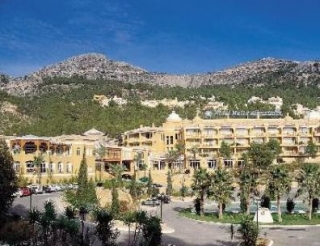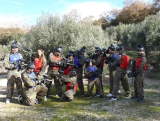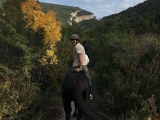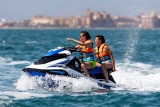The beach is an ideal attraction to disconnect from daily routine and enjoy some active tourism. When we're fed up with pollution, work or stress, we seek a seaside location to relax and forget everything. The coast provides all the relaxation we need and allows us to return to work feeling re-energised.

We choose warm locations, like Spain's southwestern coast. Some prefer combining daytime peace and quiet with late-night partying; while others seek that longed-for excitement missing during the rest of the year. Alicante is a coastal area that might suit the first type of person we've described, but truthfully its surroundings offer alternatives for all tastes.
A city of 300,000 inhabitants that blends modernity with classicism, nature with grand hotel constructions - symbols of our country's economic awakening. Yet it also boasts ancient history dating back no less than the third millennium BC.
We arrived very early in the city and immediately noticed that distinctive heat unlike what we're accustomed to. The area now occupied by Alicante, west of the old town, was the Benalúa district where Roman remains have been appearing for a century. Near Murcia's railway station, an inscription was found dedicated to Marcus Aurelius and Commodus by the Municipality of Lucentum - the city's original name.

In the second half of the 8th century, settlements of Arabs, Syrians and North Africans were established in countryside estates at the foot of Benacantil mountain, whose summit already had a small fortress. From this early medieval settlement developed what would become the modern city - by the 11th century it had a mosque with pulpit according to Al-Idrisi's accounts, later becoming an important port for exporting esparto grass ropes and soda ash.
Subsequently it exported wines too, with Alicante's port reaching its zenith in the 18th century. During the 18th-19th centuries, the city's commercial importance grew notably, becoming capital of the newly created province in 1833 - a status continuing into modern times as it secured its place among essential destinations for travellers.
We couldn't miss an initial stroll through Canalejas Park, the oldest preserved park. But Alicante's most famous promenade is undoubtedly the Explanada de España, built over the old port seawall following 1867 plans by architect José Guardiola Picó.

That day, after enjoying magnificent paella at a seafront restaurant, our aim was visiting San Juan Beach - the first beach encountered stretching north to south. Spacious at five kilometres long, it's considered among Spain's best for size, maintenance and services.
This beach connects northwards to El Campello, featuring small but fantastic coves plus another well-maintained beach with good facilities. We couldn't decide which to choose for something truly exciting: windsurfing. As some travel companions and I lacked experience, we needed a beginner's lesson.
That evening we explored Alicante's nightlife, noticing the port's significance as a major tourist promenade hub full of shops, restaurants, cafés and of course boats.
Next morning we set out to revisit the area. After seeing mandatory cultural sites like Santa María Church, the Insurance Museum or San Nicolás Cathedral (built from the early 17th century), we explored Campoamor Market near the Bullring end-to-end. We observed (and shopped - unable to resist buying everything) extensive leather goods featuring local artisan products.

Our visit concluded with greetings to Santa Bárbara Castle, atop Benacantil overlooking the sea. From there we viewed Alicante - since ancient times a military stronghold built by Arabs, later held by Castilians, Aragonese, French, English, Habsburgs and Bourbons.
Certainly the perfect finale to our trip - admiring a beautiful city postcard view. Nothing beats that... except perhaps the paella. We'll be back.











